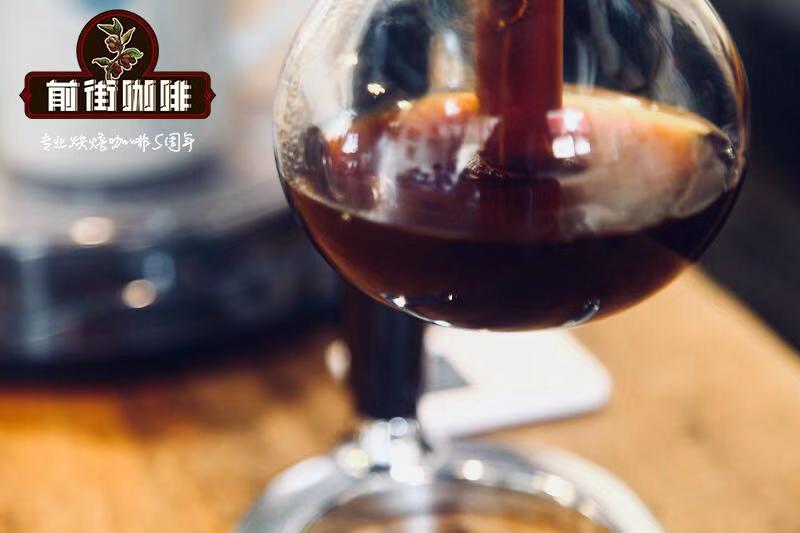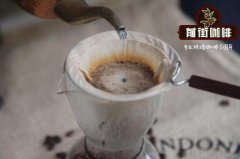There are several special treatment methods for coffee beans | details of various special treatment methods for coffee beans

Professional coffee knowledge exchange more coffee bean information please follow the coffee workshop (Wechat official account cafe_style)
[anaerobic fermentation treatment]
Anaerobic (Anaerobic) fermentation is a very popular post-processing method in recent years. Coffee fruit is usually fermented in water by placing the coffee fruit in an airtight container or in a washing tank. In this process, different microorganisms are used to ferment to produce a special flavor.
The first time I heard about anaerobic fermentation was the 15-year WBC competition, an anaerobic fermented bean from Sasa Sestic, Australia. The participating beans of SASA injected carbon dioxide into a sealed fermentor and discharged oxygen from it. In an anaerobic environment, it slowed down the decomposition rate of sugar in coffee pectin and mucus, the PH value also decreased more slowly, the fermentation time was longer, and the coffee tasted more round. Compared with aerobic fermentation, it has lower cleanliness, higher alcohol thickness and more malic acid / tartaric acid.
The characteristics of this anaerobic treatment are as follows:
1. There must be a completely closed opaque container that can be monitored.
2. then seal the container, fermentation is actually a process of converting sugar into a variety of compounds to produce alcohol and carbon dioxide, resulting in high pressure in the sealed container, and high pressure is beneficial for seeds to absorb flavor substances in pectin.
3. The container is placed indoors, and the indoor temperature should be strictly controlled. The degree of fermentation of the container can be controlled by controlling temperature and time.
4. Finally, carbon dioxide is continuously injected into the container to discharge oxygen. In the process of fermentation, PH value is an important reference index in the fermentation process. It is necessary to strictly control the change of temperature and PH value. When the sugar in pectin and mucus has just been completely consumed, immediately open the seal to stop fermentation, and immediately dry in the sun to avoid excessive fermentation.
[red wine treatment]
Red wine treatment, also known as carbon dioxide impregnation, is inspired by the brewing technology of red wine. different from the traditional process of pressing grapes and fermenting wine, it puts the whole bunch of red grapes directly into an airtight container full of CO2, and finally gets a red wine with light color, strong fruit aroma and excellent taste after slow anaerobic fermentation.
The concept of this process is introduced into the coffee treatment process, and the peel of the coffee bean is removed and put into a stainless steel container filled with carbon dioxide and oxygen in the fermentor, thus creating a closed and anaerobic environment, so that the coffee fruit undergoes strictly controlled anaerobic fermentation, thus developing more aroma and high-quality sour taste of the coffee.
[refined washed whisky Shirley barrel fermentation]
"Sherry barrel" is used as an aging barrel by the Sherry winery in the whisky industry. Sherry is a famous fortified wine produced in the sunny Jerez region of southern Spain. Sherry must be aged through the Solera system (Solera System) in the process of making sherry.
Solera system essentially refers to the process of mixing sherry of different ages after sherry is fortified. In the Solera system, all the barrels are stacked according to the vintage, with the oldest sherry at the bottom and the youngest sherry at the top, extracting some of the wine from the bottom barrel each year for bottling and sales, and then extracting the appropriate proportion from the upper barrel to replenish it.
And exquisite washing Shirley barrel fermentation method is to pick back the coffee cherry first delicate washing treatment, after washing treatment, these processed coffee cherries into a whisky into the Shirley barrel fermentation in a low temperature environment of 15-20 ℃ for 30-40 days, and then dry in the shade; Shirley barrel fermentation method makes the coffee has a stunning aroma, thick taste.
[raisin honey treatment]
Costa Rican musicians' series of raisin honey treatment is to retain 100% pectin and zero water treatment. In general, the fresh coffee fruit is harvested without removing the peel, directly placed on the drying bed and dried into a raisin state. Then remove the peel and retain the pectin before drying. At this stage, climatic factors are the key to the success of honey treatment.
In the drying process to constantly flip these coffee cherries to make the drying uniform, but to grasp the frequency of flipping, to dry slowly to ensure that the coffee has fermentation treatment, but not too slow to appear excessive fermentation; this sweet raisin honey treatment, so that the coffee flavor has the taste of white wine and balanced acidity, fermented aroma is also relatively rich.
[lactic acid fermentation]
Lactic acid fermentation is to obtain higher concentration of lactic acid bacteria in the process of coffee fermentation by anaerobic method. Because the ideal flavor of coffee is "mellow", "high sweetness", "caramel", "wine acidity" and "silky taste", all of which depend on the concentration of lactic acid in the fermentation process.
Before you begin to remove the peel, put the cherries in an airtight jar. Record the sugar content, temperature and pH value; ripe cherries have a high sugar content, and they provide sufficient food and fermentation for yeast and bacteria that naturally exist in the air and coffee cherries.
One of the by-products of the fermentation is carbon dioxide, which is slowly filled with carbon dioxide when the jar is sealed, draining the air. Under these anaerobic conditions (that is, no oxygen), the living bacteria produce lactic acid, hence the name. After lactic acid fermentation, LPET will ferment the coffee cherries in a container for about 70 hours before removing the peel.
If you want to know whether coffee cherries have undergone lactic acid fermentation, the easiest way is to look at the beans after removing the peel and pulp. If all goes well, some of the colors in the pulp will be transferred to the beans because a little alcohol will be produced during the fermentation process.
After drying, these raw coffee beans still need to be manually screened before they can be exported. In the final screening process, the ratio of raw coffee beans to coffee cherries was about 1:85, which means that LPET needs an average of 85 kilograms of coffee cherries to produce 10 kilograms of raw beans.
[animal in vivo fermentation]
The method of fermentation in animals is a relatively cruel method of coffee treatment. the most typical is civet coffee (Kopi Luwak). Civets often come out at night, relying on their eyesight and sense of smell, specially selecting the most mature and reddest coffee cherry fruits to eat. the indigestible coffee beans are excreted from the body through feces, and these precious internal fermented beans are obtained after cleaning and processing.
This treatment uses lactic acid bacteria and digestive juices from the animal digestive tract instead of machine or water washing to remove the pectin from the pulp and pods, which also doubles the flavor of coffee and has its own unique fermented taste.
END
Important Notice :
前街咖啡 FrontStreet Coffee has moved to new addredd:
FrontStreet Coffee Address: 315,Donghua East Road,GuangZhou
Tel:020 38364473
- Prev

What is the processing process of coffee beans?| Coffee beans peeling method is the use of machinery?
Professional coffee knowledge exchange More coffee bean information Please pay attention to coffee workshop (Weixin Official Accounts cafe_style) Washing method Washing step In fact, under the water washing method, there are many magic modified versions of it. For simplicity and ease of understanding, we will only talk about washing in a narrow sense. A. Picking B. Soak screening can be seen in the above picture to pick coffee fruit maturity is not the same
- Next

Does Blue Mountain Coffee taste sour? what's so special about the taste characteristics of Blue Mountain Coffee?
For more information about coffee beans, please follow the Coffee Workshop (official Wechat account cafe_style) Jamaica is one of the island countries in the Caribbean and the Blue Mountains are the longest mountains on the island. You can walk along a sightseeing path to the highest peak, and you can see the north and south coast. This is a beautiful place, warm and humid, perfect for growing Arabica coffee beans. Unripe
Related
- Beginners will see the "Coffee pull flower" guide!
- What is the difference between ice blog purified milk and ordinary milk coffee?
- Why is the Philippines the largest producer of crops in Liberia?
- For coffee extraction, should the fine powder be retained?
- How does extracted espresso fill pressed powder? How much strength does it take to press the powder?
- How to make jasmine cold extract coffee? Is the jasmine + latte good?
- Will this little toy really make the coffee taste better? How does Lily Drip affect coffee extraction?
- Will the action of slapping the filter cup also affect coffee extraction?
- What's the difference between powder-to-water ratio and powder-to-liquid ratio?
- What is the Ethiopian local species? What does it have to do with Heirloom native species?

